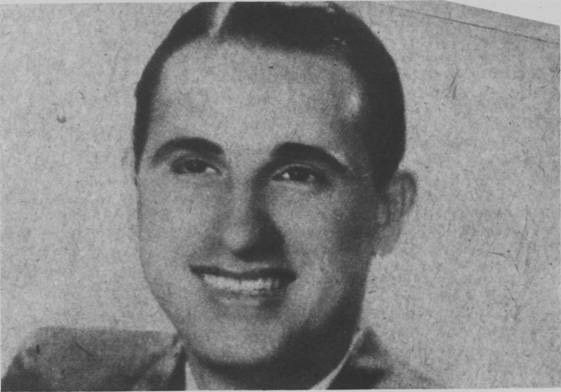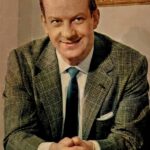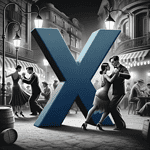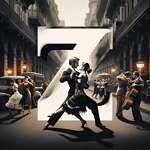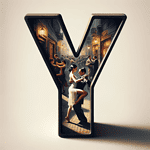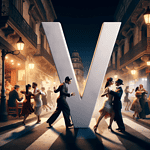Argentine Tango, with its intricate steps and passionate embrace, has been captivating dancers worldwide for decades. In the heart of Buenos Aires, a maestro of this sultry dance was born on December 13, 1906 – Héctor Marcó. Known not only for his skills on the dance floor but also as a prominent tango composer, Marcó’s influence in the world of tango is undeniable.
Biography of Héctor Marcó
Héctor Marcó, a true porteño born in the Boedo neighborhood of Buenos Aires, was more than just a composer. He was a dancer at heart. Despite gaining recognition as a tango composer, Marcó’s true passion lay in singing. His collaboration with iconic figures like Carlos Di Sarli, Edmundo Rivero, and Ángel Vargas elevated his status in the tango realm. Marcó’s personal life mirrored the romantic essence of tango; he married Susana Lidya Orlandini, and their union bore witness to two children, including the tango singer and songwriter Gloria Marcó.
Musical Legacy Beyond Tango Halls
Marcó’s contribution to the tango extends beyond dance halls. In 1942, he composed the music for the film “El camino de las llamas,” showcasing his versatility. For a period, Marcó even led his own tango orchestra. His compositions, marked by a profound understanding of the soul of tango, continue to resonate with dancers and music enthusiasts alike.
Timeless Tango Tunes: Marcó’s Greatest Hits
Among Marcó’s extensive repertoire, several tangos have stood the test of time, enchanting dancers in milonga events across the globe. Some notable compositions include:
- Bien Frappé
- Alma Mía
- Corazón
- Cuatro Vidas
- Te Quiero
These tangos, immortalized by artists like Carlos Di Sarli and Edmundo Rivero, continue to evoke the passion and drama that define the essence of Argentine Tango.
10 Most Important Tango Songs by Héctor Marcó
- Bien Frappé
- Recording Year: 1952
- Orchestra: Carlos Di Sarli
- Singer: Carlos Di Sarli (instrumental version also popular)
- Details: “Bien Frappé” is celebrated for its rhythmic complexity and melodic richness. Its lively beats and elegant phrasing make it a favorite among tango dancers, creating an energetic atmosphere on the dance floor.
- Alma Mía
- Recording Year: 1943
- Orchestra: Carlos Di Sarli
- Singer: Alberto Podestá
- Details: This timeless classic is known for its emotional depth and romantic allure. The combination of Podestá’s expressive vocals and Di Sarli’s lush orchestration has solidified “Alma Mía” as an enduring piece in the tango repertoire.
- Corazón
- Recording Year: 1942
- Orchestra: Carlos Di Sarli
- Singer: Roberto Rufino
- Details: A tango that speaks to the heart, “Corazón” is characterized by its soulful melodies and Rufino’s poignant interpretation. Its emotional intensity and graceful structure make it a staple in milongas worldwide.
- Cuatro Vidas
- Recording Year: 1941
- Orchestra: Héctor Marcó Orchestra
- Singer: Héctor Marcó
- Details: As one of Marcó’s compositions, “Cuatro Vidas” showcases his versatility as a singer and composer. The song’s expressive lyrics and Marcó’s heartfelt delivery contribute to its enduring popularity.
- Te Quiero
- Recording Year: 1941
- Orchestra: Carlos Di Sarli
- Singer: Alberto Podestá
- Details: “Te Quiero” is a testament to Marcó’s ability to capture the essence of love in tango. Podestá’s tender vocals combined with Di Sarli’s refined orchestration create a captivating dance experience.
- Porteño y Bailarín
- Recording Year: 1939
- Orchestra: Francisco Canaro
- Singer: Carlos Roldán
- Details: This early gem by Marcó is a celebration of the porteño spirit, reflecting the lively dance culture of Buenos Aires. The spirited arrangement by Canaro and Roldán’s charismatic delivery make it a cherished piece among tango enthusiasts.
- Nido Gaucho
- Recording Year: 1939
- Orchestra: Francisco Canaro
- Singer: Carlos Roldán
- Details: “Nido Gaucho” transports dancers to the rural landscapes of Argentina. Canaro’s orchestra adds a rustic charm, while Roldán’s vocals convey the simplicity and beauty of gaucho life.
- Whisky
- Recording Year: 1953
- Orchestra: Carlos Di Sarli
- Singer: Roberto Rufino
- Details: “Whisky” stands out for its melancholic undertones and poignant lyrics. Rufino’s emotive delivery, coupled with Di Sarli’s nuanced orchestration, creates a mesmerizing atmosphere that resonates with tango aficionados.
- Gol Argentino
- Recording Year: 1942
- Orchestra: Carlos Di Sarli
- Singer: Roberto Rufino
- Details: Inspired by the passion for soccer in Argentina, “Gol Argentino” infuses tango with the excitement of the sport. Rufino’s dynamic vocals and Di Sarli’s lively arrangement make it a festive and energetic choice on the dance floor.
- Esta Noche de Luna
- Recording Year: 1951
- Orchestra: Carlos Di Sarli
- Singer: Alberto Podestá
- Details: “Esta Noche de Luna” captivates with its dreamy melodies and poetic lyrics. Podestá’s velvety voice, combined with Di Sarli’s orchestral finesse, creates a magical ambiance, making it a cherished selection for romantic moments in the world of tango.
These ten tango gems by Héctor Marcó continue to enchant dancers, capturing the spirit and emotions that define the art of Argentine Tango.
FAQ Section: Unraveling the Mysteries of Héctor Marcó’s Tango
What made Héctor Marcó a standout figure in the world of tango?
Marcó’s ability to capture the emotions of tango in both his compositions and performances made him a revered figure. His distinctive style and collaborations with tango legends contributed to his enduring legacy.
Did Héctor Marcó only focus on tango music?
While tango was his primary domain, Marcó’s musical talent extended to composing for films, showcasing his versatility as an artist.
How did Marcó’s personal life influence his music?
Marcó’s personal experiences, including his marriage and family life, added a layer of authenticity to his compositions, making them resonate on a deeper emotional level.
Notable Sources for Tango Enthusiasts
For those eager to dive deeper into the world of Héctor Marcó and Argentine Tango, the following sources provide valuable insights:
- Gloria Marcó’s letter to Leopoldo Marcolongo (Published in August 2005)
- Héctor Marcó’s Autobiography on Todo Tango
